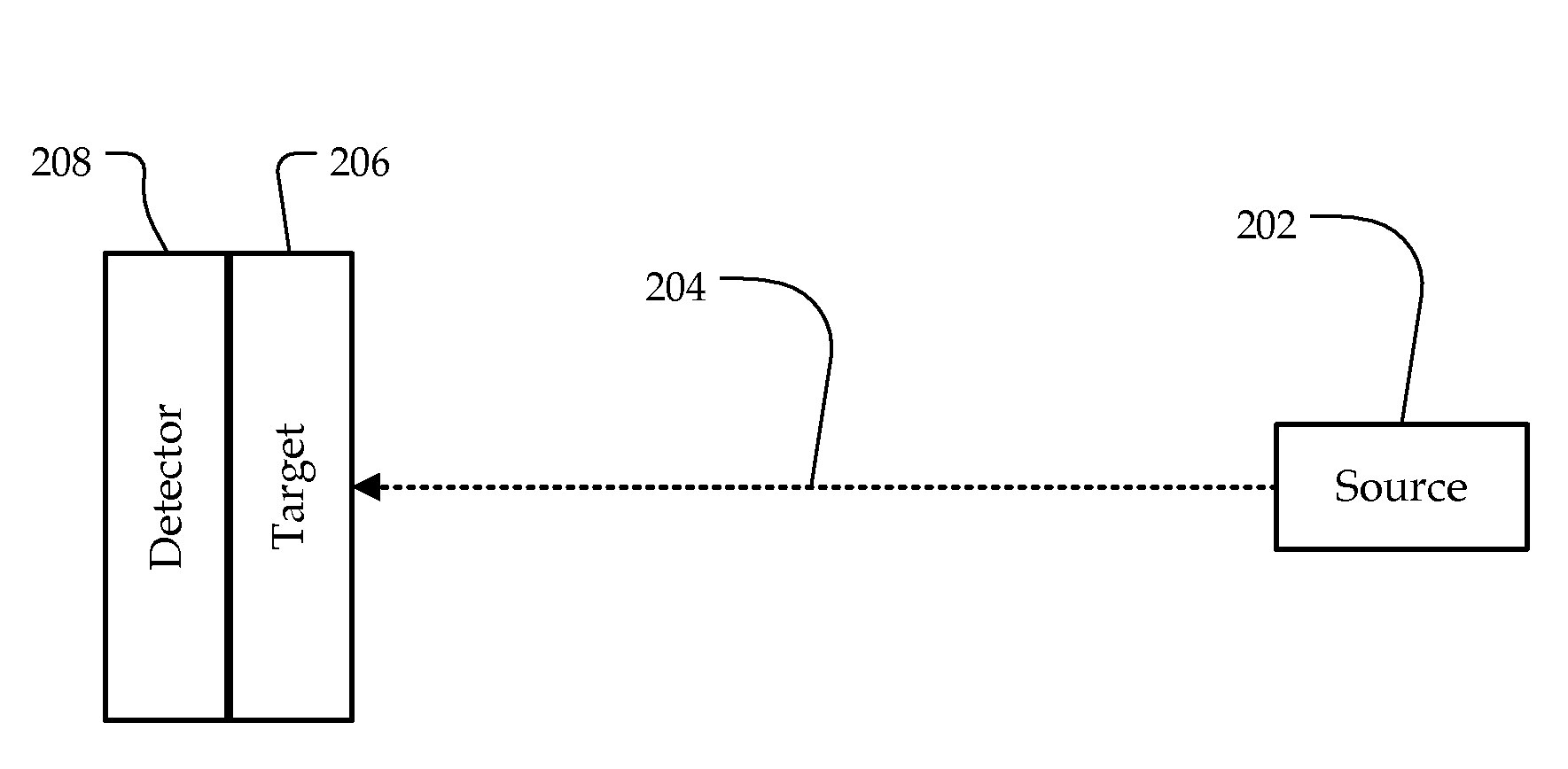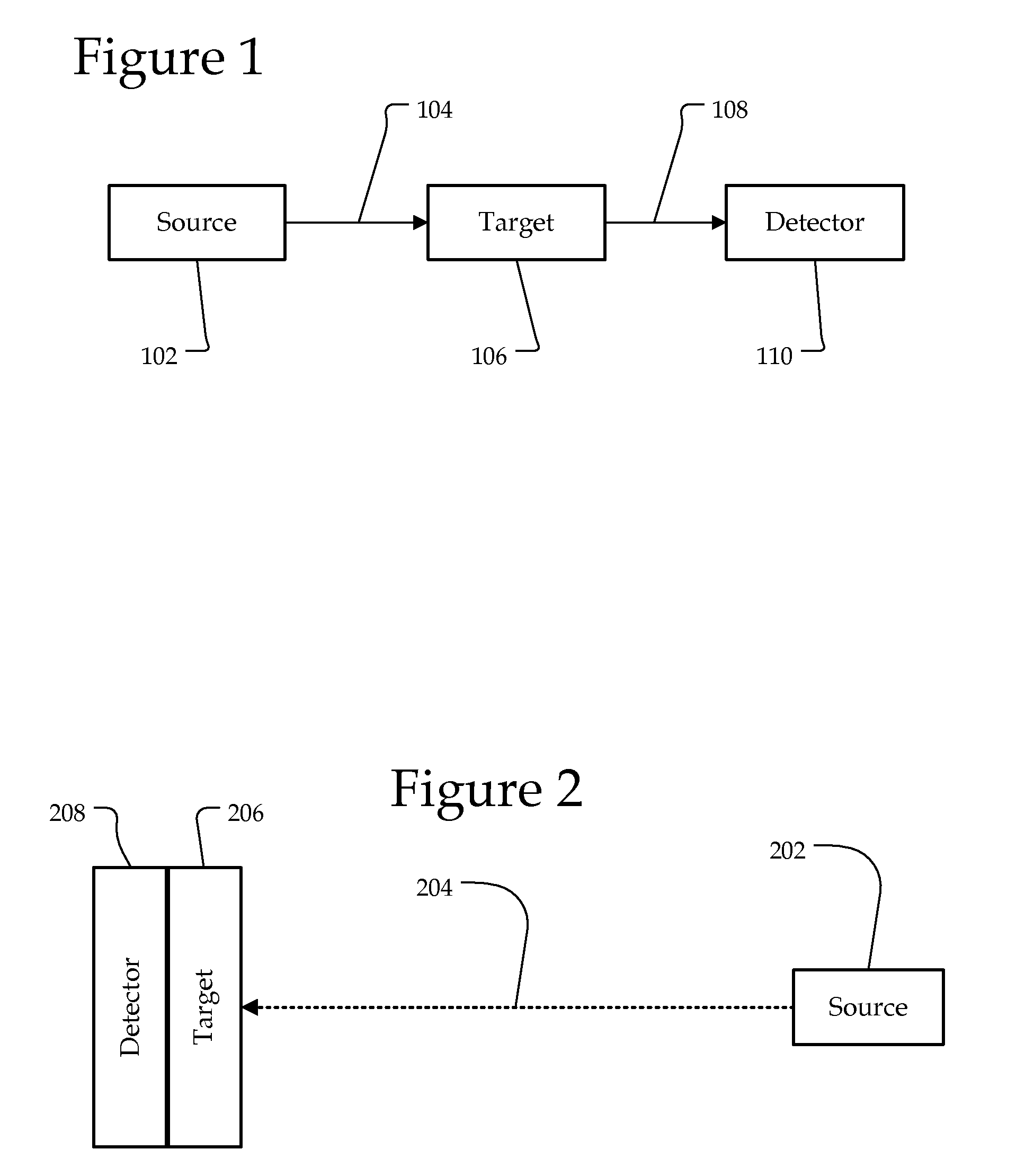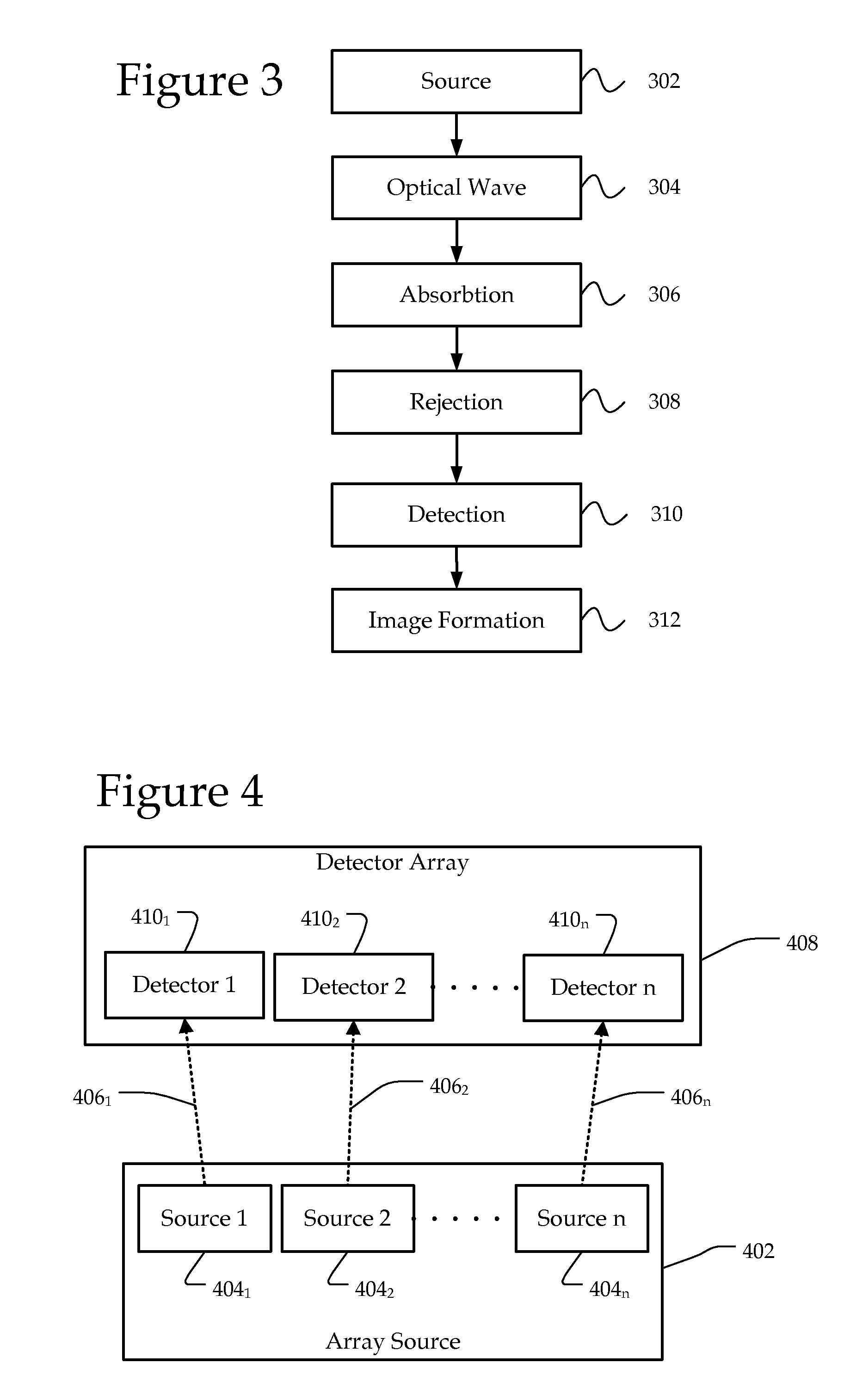Photoacoustic point spectroscopy
a technology of photoacoustic point and spectroscopy, which is applied in the direction of spectrometry/spectrophotometry/monochromators, instruments, optical radiation measurement, etc., can solve the problems of difficult detection of pressure/sound waves, local heating and pressure/sound waves, and reduce the range and sensitivity of producing a photoacoustic spectrum
- Summary
- Abstract
- Description
- Claims
- Application Information
AI Technical Summary
Benefits of technology
Problems solved by technology
Method used
Image
Examples
Embodiment Construction
[0011]By way of introduction, a system and method for generating a photoacoustic spectrum without an enclosed chamber is described. A source may emit a beam to a target and a detector measures signals generated as a result of the beam being emitted on the detector. The detector is coated with a target material, residue, or molecule. By emitting a chopped / pulsed light beam to the target coating on the detector, it may be possible to determine the target's optical absorbance by monitoring the intensity of photoacoustic vibration produced by the light on the detector at different wavelengths. As the wavelength of light is changed, the target may absorb or reject each optical frequency. Rejection may decrease the photoacoustic intensity at the detector and absorption may increase the intensity. Accordingly, an identifying spectrum of the target coating may be made with the photoacoustic wave intensity variation of the detector as a function of illuminating wavelength. The detector may c...
PUM
 Login to View More
Login to View More Abstract
Description
Claims
Application Information
 Login to View More
Login to View More - R&D
- Intellectual Property
- Life Sciences
- Materials
- Tech Scout
- Unparalleled Data Quality
- Higher Quality Content
- 60% Fewer Hallucinations
Browse by: Latest US Patents, China's latest patents, Technical Efficacy Thesaurus, Application Domain, Technology Topic, Popular Technical Reports.
© 2025 PatSnap. All rights reserved.Legal|Privacy policy|Modern Slavery Act Transparency Statement|Sitemap|About US| Contact US: help@patsnap.com



